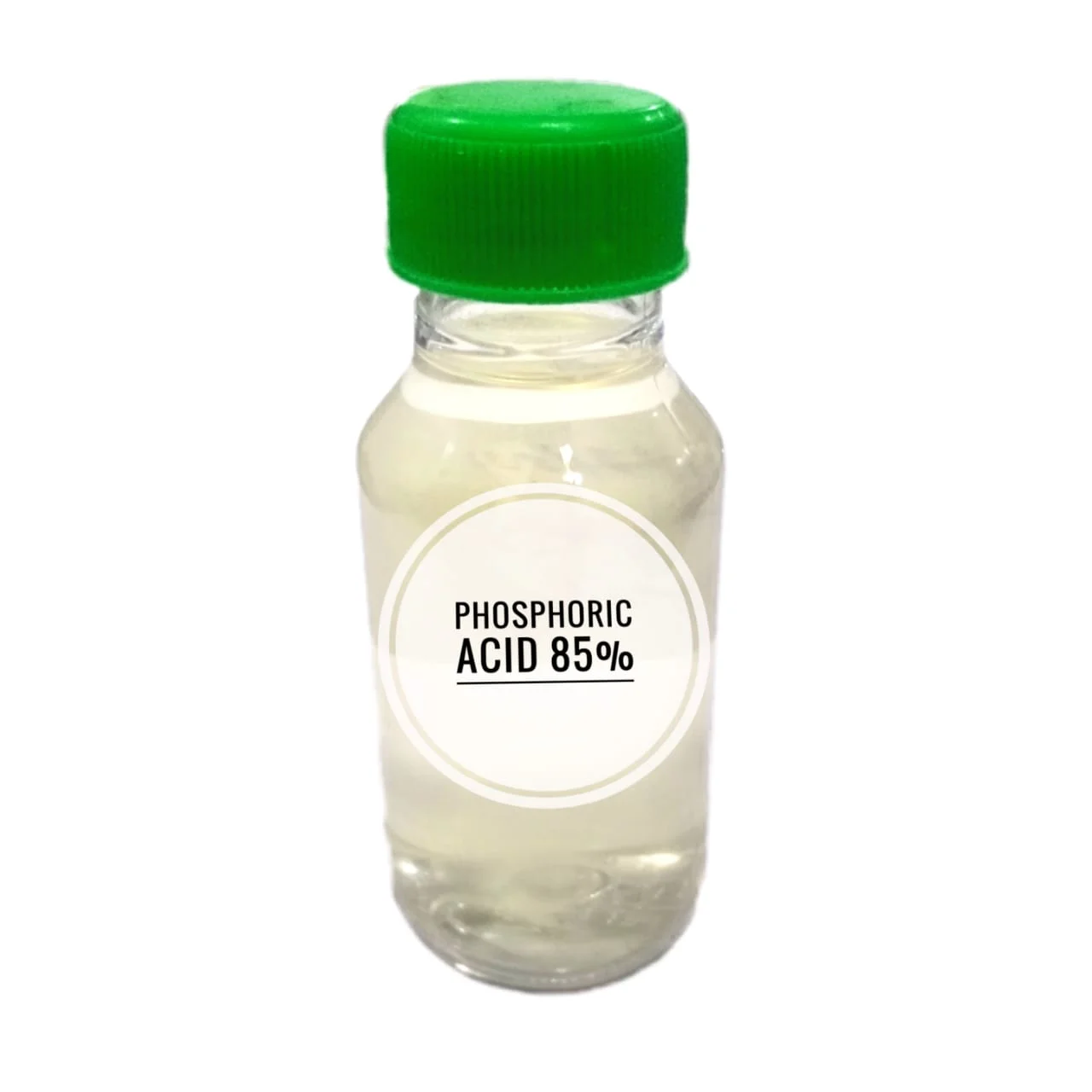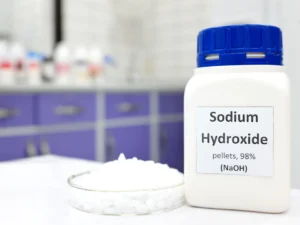Description
Phosphoric Acid: A Versatile Chemical with Diverse Applications
Phosphoric acid, also known as orthophosphoric acid or phosphoric(V) acid, is a weak acid with the chemical formula H₃PO₄. It’s a colorless, odorless, and syrupy liquid in its concentrated form, though it’s more commonly encountered as an aqueous solution. While often perceived as a complex chemical, phosphoric acid plays a crucial role in a wide range of industries, from agriculture to food production, and even medicine.
Understanding Phosphoric Acid’s Structure and Properties
The structure of phosphoric acid consists of a central phosphorus atom bonded to four oxygen atoms. Three of these oxygen atoms are also bonded to hydrogen atoms, giving rise to the acidic nature of the compound. This arrangement allows phosphoric acid to donate protons (H⁺ ions) in solution, making it a Bronsted-Lowry acid.
Key properties of phosphoric acid include:
- Acidity: While a weak acid, it can still react with bases to form salts called phosphates.
- Hygroscopicity: It readily absorbs moisture from the air, explaining its syrupy consistency.
- Corrosive Nature: Concentrated solutions can be corrosive to metals and other materials.
- Non-toxicity: In diluted forms, phosphoric acid is generally considered non-toxic.
Applications Across Industries
The versatility of phosphoric acid stems from its unique properties and its ability to form a variety of phosphate compounds. Some of its most notable applications include:
- Agriculture: Fertilizer Production: The majority of phosphoric acid produced globally is used in the manufacture of fertilizers, particularly phosphate fertilizers. These fertilizers provide essential nutrients like phosphorus, crucial for plant growth, root development, and overall plant health.
- Food and Beverage Industry: As a Flavor Enhancer and Preservative: Phosphoric acid is used as an acidity regulator in various food and beverage products. It adds a tangy flavor to soft drinks like colas and acts as a preservative by inhibiting the growth of bacteria and fungi. It can also be found in processed meats, cheeses, and jams.
- Metal Treatment: Rust Removal and Surface Preparation: Phosphoric acid effectively removes rust from metal surfaces by converting iron oxide (rust) into iron phosphate. This process, known as phosphatizing, also creates a protective coating that inhibits further corrosion and improves paint adhesion.
- Detergents and Cleaning Products: Phosphoric acid and its salts (phosphates) are used in detergents and cleaning agents to soften water, enhance cleaning power, and prevent the redeposition of dirt. However, its use in detergents has been reduced in some regions due to environmental concerns related to water pollution.
- Pharmaceuticals and Medicine: Phosphoric acid is used as a pharmaceutical aid in various medications and dental products. For instance, it can be found in some anti-nausea medications and dental etching solutions.
- Water Treatment: Scale Inhibition: Phosphates can be added to water systems to prevent the formation of scale (calcium and magnesium deposits) in pipes and equipment.
Production and Handling
Phosphoric acid is primarily produced through two main methods:
- Wet Process: This involves reacting phosphate rock with sulfuric acid. This is the more common and less expensive method, but the resulting acid is typically less pure.
- Thermal Process: Here, elemental phosphorus is burned and then hydrated. This produces a higher purity acid, but it’s more energy-intensive and expensive.
When handling phosphoric acid, it’s essential to wear appropriate personal protective equipment (PPE), including gloves, eye protection, and respiratory protection if working with concentrated solutions or vapors. Proper ventilation is also crucial to prevent inhalation of fumes.
Environmental and Safety Considerations
While phosphoric acid itself is generally considered non-toxic in diluted forms, its use raises some environmental concerns. Phosphate runoff from agricultural fields and detergents can contribute to eutrophication in bodies of water, leading to excessive algae growth and oxygen depletion, harming aquatic ecosystems. Therefore, the responsible use and management of phosphate-containing products are crucial to minimize environmental impact.
In conclusion, phosphoric acid is a vital and versatile chemical with a wide array of applications across numerous industries. Its unique properties make it indispensable in fertilizer production, food processing, metal treatment, and various other areas. Understanding its properties, applications, and potential environmental impact is crucial for its safe and sustainable use in the future.














Reviews
There are no reviews yet.